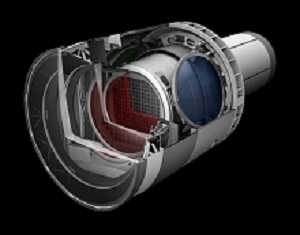
World’s largest digital camera will photograph the universe
Details of the universe will come into sharper focus thanks to a powerful, new camera the U.S. government is funding.
The U.S. Department of Energy has approved construction of a 3.2-gigapixel digital camera that will help collect several million gigabytes of data every year and help scientists better understand the universe.
The camera will serve as the eyes of the Large Synoptic Survey Telescope, which, beginning in 2022, will start photographing the southern sky at night from a mountain in Chile.
Over the course of a decade, the telescope will detect more galaxies than there are people on Earth and observe tens of billions of objects, the DOE’s SLAC National Accelerator Laboratory said Monday. The DOE is paying for the camera’s construction while the National Science Foundation is funding the telescope and its site facilities and database system.
This will be the world’s largest and most powerful digital camera, the SLAC said, adding that it will weigh around 3 tons and be the size of a small car.
Information gathered by the camera will aid scientists research how the galaxy was formed, view exploding stars and better understand dark matter and dark energy, which comprise a majority of the universe, among other uses.
The images taken by the camera will be at such a high resolution, it would take 1,500 high-definition televisions just to view one of them. One shot taken with the camera will record a section of sky that’s almost 40 times the size of the moon.
The camera will have a mechanism for changing its filter. Different filters will allow the camera to capture different wavelengths, ranging from near-ultraviolet to near-infrared.
The SLAC in Menlo Park, Calif., will build and test the camera, a process that’s expected to take five years. Various universities and labs from across the globe will build the camera’s components.
The SLAC is also building the database that will store the data captured by the telescope, which will total 6 million gigabytes per year.
Work is already underway on building the camera’s sensors, and contracts for constructing its optics and other critical parts are being issued.








